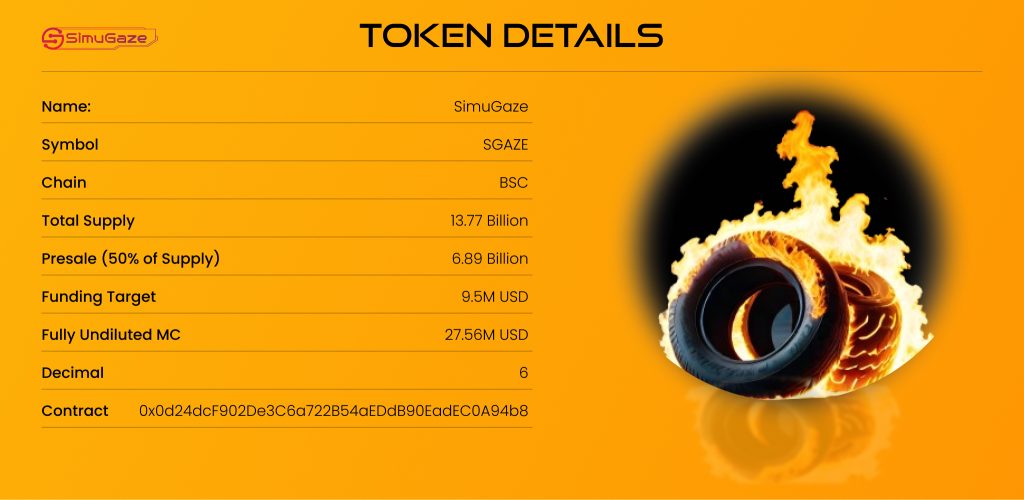Distributed Ledger Technology: Unveiling its Potential
Distributed ledger technology, or DLT, represents a paradigm shift in the recording and distribution of information. DLT encompasses a wide range of systems that enable a network of participants to maintain a consensus of replicated, shared, and synchronized data, spread across multiple sites or institutions. Unlike traditional databases managed by a single entity, DLTs are decentralized and do not necessitate a central authority or intermediary.
The fundamentals of DLT rest on the principles of transparency and immutability. Each participant, or node, within the network maintains a copy of the ledger, ensuring that all entries are visible and verifiable by all participants. Changes to the ledger are made through a consensus process which varies from one system to another, but typically requires validation by multiple nodes to ensure the security and accuracy of the information added.
DLT's application extends beyond simple data storage; it's being used for many purposes, from financial transactions to asset management and supply chain operations. By providing a secure and efficient way to record and share data, DLT is helping to redefine processes in various industries, potentially improving accountability and reducing the likelihood of fraud.
Fundamentals of Distributed Ledger Technology
Distributed Ledger Technology (DLT) represents a shift in recording and sharing data across multiple parties. It operates without a central authority and provides a transparent, immutable record of transactions.
Blockchain Basics
Blockchain is the most recognized form of DLT. Participants, referred to as nodes, maintain a copy of the ledger to create a consensus on its contents. Key characteristics include:
- Decentralization: No single point of control exists; authority is distributed among nodes.
- Transparency: Transaction histories are public, fostering transparency.
- Immutability: Once recorded, data cannot be altered retroactively.
Blockchain implementation utilizes a sequence of blocks, which are structured data sets containing a batch of transactions validated by nodes. Blocks are interconnected through cryptographic hashes, a process ensuring the security and consistency of the entire chain.
Types of Distributed Ledgers
DLTs can be categorized not only by their structure but also by their governance models:
- Permissionless ledgers: These are open and allow anyone to join and participate in the network (e.g., Bitcoin).
- Permissioned ledgers: Participation requires authorization, which typically involves identity verification.
Consensus mechanisms in DLT vary, and can include protocols like Proof of Work (PoW) and Proof of Stake (PoS), among others. Each type serves to validate transactions and maintain the ledger's integrity without a central authority.
Architecture and Design
Distributed Ledger Technology (DLT) encompasses a range of systems designed for decentralized data management. Its architecture and design are critical for ensuring reliable and secure transactions across various nodes in a network.
Nodes and Networking
In DLT systems, nodes are individual computers that work together to form a network. Each node holds a copy of the ledger to enable a distributed consensus. Networking protocols are key to governing interactions between nodes, ensuring data consistency, and synchronization across the network. For example, the InterPlanetary File System (IPFS) can be used for peer-to-peer sharing of the ledger.
Consensus Mechanisms
The consensus mechanism is a vital component that enables trust and agreement on the state of the ledger without a central authority.
- Proof of Work (PoW): This is used by Bitcoin, where miners solve complex mathematical problems to validate transactions and create new blocks.
- Proof of Stake (PoS): This mechanism selects validators based on the number of coins held, thereby reducing energy consumption.
Cryptography and Security
Cryptography is fundamental to the security of DLT, ensuring that only authorized people can access and modify data.
- Public Key Infrastructure (PKI): Utilizes asymmetric cryptography for secure communications between nodes.
- Hash Functions: They are critical in linking blocks securely, making tempering with the ledger computationally impractical.
DLT must employ robust security measures to protect against malicious attacks and to authenticate transaction integrity.
Smart Contracts and Decentralized Applications
Smart contracts facilitate and enforce agreements automatically, while decentralized applications (dApps) operate on a blockchain, removing the need for central authority.
Ethereum and Smart Contract Platforms
Ethereum is a pioneering platform for creating smart contracts. It allows users to write programs that can execute automatically when certain conditions are met. These smart contracts are powered by Ethereum's native cryptocurrency, Ether (ETH). The platform has a feature known as the Ethereum Virtual Machine (EVM), which executes the script of smart contracts.
Developing Decentralized Applications
Developing decentralized applications (dApps) involves intricate processes to make sure they operate securely and efficiently on a blockchain network. Developers typically use smart contract platforms like Ethereum to build these applications, using the underlying technology to maintain decentralization and provide functionalities like automated consensus mechanisms.
Use Cases and Industry Applications
Distributed Ledger Technology (DLT) has diverse applications across various industries, offering improved transparency, increased security, and enhanced efficiency.
Banking and Finance
In the banking and finance sector, DLT is revolutionizing the way transactions are processed. Banks are employing DLT for clearing and settlement processes, reducing the time for these transactions from days to mere seconds. Additionally, the technology underpins cryptocurrencies and enables smart contracts that automatically execute when conditions are met, without the need for intermediaries.
Supply Chain Management
DLT streamlines supply chain management by providing real-time tracking of goods from origin to destination. Its application ensures that all parties have access to the same information, thereby reducing the likelihood of errors and fraud. Companies can use DLT to record the production, shipment, and receipt of products in a tamper-proof system.
Identity Verification
Identity verification has become more secure and efficient with DLT. This technology provides a decentralized approach to identity management, allowing people to control their personal information. Financial institutions and governments are adopting DLT to combat identity theft and ensure the authenticity of personal credentials.
Technology Implementation
Integration with Existing Systems
Integrating DLT into existing enterprise systems necessitates a strategic approach to ensure compatibility and functionality. Key steps include:
- Assessment: Evaluate the current infrastructure to identify integration points.
- Design: Develop a tailored DLT architecture that aligns with existing workflows.
- Compatibility Testing: Rigorously test DLT protocols against current system specifications.
Ensuring seamless communication between DLT and existing databases or applications is crucial for operational harmony. Synchronization mechanisms must be devised to maintain data consistency across the network.
Challenges and Considerations
Adopting DLT comes with its set of challenges:
- Scalability: DLT must be able to handle increasing workloads without compromising performance.
- Interoperability: The technology should work across various platforms and industries.
- Regulatory Compliance: DLT should adhere to legal standards in all applicable jurisdictions.
Some other considerations include the financial investment for the integration process and the need for technical expertise to manage and maintain the system post-implementation. The planned DLT must be robust to safeguard against potential cyber threats and equipped with efficient consensus mechanisms for transaction validation.
Regulatory and Compliance Issues
As distributed ledger technology (DLT) gains traction across various sectors, regulatory and compliance issues become increasingly important. These concerns are critical for ensuring the technology's integrity and trustworthiness.
Global Regulatory Landscape
Regulatory bodies worldwide are examining how DLT fits in existing frameworks and where new regulations may be needed. For example:
- United States: Agencies like the SEC (Securities and Exchange Commission) scrutinize DLT regarding securities laws.
- European Union: The GDPR (General Data Protection Regulation) impacts DLT applications, especially in terms of data storage and the right to be forgotten.
- Asia-Pacific: Jurisdictions vary widely, with some ike Japan and Singapore actively fostering DLT-friendly environments, while others maintain more cautious views.
In summary, the regulatory landscape is diverse, with each jurisdiction addressing DLT based on its unique legal and economic environment.
Data Privacy and Protection
With DLT's immutable record-keeping capabilities, data privacy and protection pose significant challenges:
- Data Modification: Once information is on a blockchain, it is difficult to alter, raising concerns about error correction and data management.
- Privacy Laws: Compliance with laws like GDPR seems at odds with blockchain's permanence.
Entities using DLT have to make sure they are not only complying with current data protection laws but also staying adaptable to potential regulatory changes in this fast-evolving field.
Innovation and Future Trends
Emerging Technologies in DLT
Smart Contracts: Advancements in DLT have made smart contracts more complex and functional. They can automatically execute agreements without the need for intermediaries once predefined conditions are met.
Interoperability: Efforts towards achieving interoperability between different DLT platforms are in progress. This will allow for seamless information exchange and transactions across diverse blockchain networks, enhancing the technology's utility.
Predictions and Market Evolution
DLT Integration: Financial institutions are increasingly integrating DLT solutions for improved efficiency and security. Upcoming trends suggest a broader adoption in sectors beyond finance, including supply chain and healthcare.
Regulatory Landscape: Regulatory frameworks are expected to evolve to accommodate DLT innovations, which will be critical in driving institutional adoption and public trust.
Market Growth: It is predicted that market growth will be sustained as more industries recognize the potential cost savings, transparency, and security benefits of DLT.
Interoperability of Distributed Ledgers
Interoperability in the realm of distributed ledger technology (DLT) represents the capability of diverse ledger systems to connect and communicate with one another. This feature is crucial because it allows distinct systems, both DLT-based and traditional, to seamlessly share information and execute transactions, hence broadening the scope of applications and efficiencies.
- Legacy Systems Integration: Many distributed ledgers are seeking ways to interoperate with established legacy systems. For instance, integrating Bitcoin with conventional banking payment platforms is an ongoing challenge.
- Different Types of DLTs: Interoperability also involves the interaction between various types of DLTs, such as permissionless (public) and permissioned (private) ledgers. While permissionless ledgers are open to everyone, permissioned ledgers restrict access to certain participants.
- Connecting Ledgers Without Intermediaries: Current interoperability solutions aim to connect distributed ledgers without the need for third-party intermediaries. They emphasize direct linking between different ledger types, ensuring secure and transparent interactions.
- Challenges and Solutions: Despite the potential, achieving true interoperability faces technical challenges related to governance, scalability, and technology adaptation. However, significant efforts are being made, and different frameworks have been proposed, albeit with notable differences in their approaches.
In summary, DLT interoperability is still in its infancy and requires more research. It holds the promise of creating a connected and efficient blockchain ecosystem, addressing the existing 'siloed' state of many ledgers.
Environmental Impact and Sustainability
Distributed Ledger Technology (DLT) holds potential for enhancing environmental sustainability across various industries. It introduces a new paradigm for tracking and verifying transactions, which can lead to more efficient resource management and a reduction in environmental footprints.
Transparency and Traceability: DLT enables the creation of transparent supply chains. By storing immutable records, stakeholders can trace a product from origin to consumer, ensuring responsible sourcing and reducing the prevalence of environmentally damaging practices.
Energy Consumption: The energy demand of some DLT systems, especially those using proof-of-work, is a concern. However, the emergence of more energy-efficient consensus mechanisms, like proof-of-stake, offer solutions less taxing on the environment.
Examples of Environmental Applications:
- CO2-Certificate Trading: DLT can streamline the trade of CO2 emissions certificates, incentivize low-emission production, and facilitate adherence to international agreements like the Paris Climate Convention.
- Waste Management: By providing a reliable way to monitor recycling processes and waste management, DLT can ensure proper disposal and recycling practices.
- Renewable Energy: It can simplify the distribution and tracking of renewable energy production, contributing to a more sustainable energy grid.
DLT represents a tool with the capability to support more transparent, efficient, and sustainable practices across a multitude of sectors. However, its environmental impact is contingent upon the choice of its underlying technology and the commitment to integrate it with a sustainability-focused framework.
Community and Development
In the realm of distributed ledger technology (DLT), community and development efforts are crucial for innovation and progress. The community fosters collaboration and contributes to a rich ecosystem of developer resources, while open-source projects drive transparency and collective problem-solving.
Open Source Projects
Open-source projects are the bedrock of the DLT community, providing a transparent framework for development and encouraging community participation. Projects like Hyperledger Fabric and Ethereum showcase collaborative efforts where developers contribute to the codebase, enhancing and refining the technology. These platforms offer:
- Documentation: Detailed guides and API references.
- Repositories: Central locations for source code, often hosted on platforms such as GitHub.
- Issue Tracking: Systems to report and manage bugs and feature requests.
Developer Resources and Networks
Developer resources and networks form the backbone of the DLT innovation pipeline. Resources like Stack Overflow, Reddit, and exclusive DLT forums offer information sharing and problem-solving venues. Networks like the Enterprise Ethereum Alliance connect businesses with experts, fostering technological advancements. These resources typically include:
- Toolkits and SDKs: Essential tools for building and testing DLT applications.
- Online Courses and Webinars: Educational materials from platforms like Coursera and Udemy.
- Conferences and Meetups: Events for networking and knowledge exchange.
Frequently Asked Questions
How does distributed ledger technology differ from traditional databases?
Distributed ledger technology (DLT) differs from traditional databases in that it does not have a centralized data store; instead, it distributes copies of the ledger across a network of nodes. This ensures enhanced security and immutability, as all participants maintain their own copy of the ledger.
What are some prominent examples of distributed ledger technology in use today?
Cryptocurrencies like Bitcoin and Ethereum are well-known examples of DLT in use. Additionally, blockchain-based platforms are being implemented for supply chain management, smart contracts, and identity verification.
What are the main types of distributed ledgers available in blockchain?
The main types of distributed ledgers in blockchain are public, private, and consortium blockchains. Public blockchains are open and allow anyone to participate, while private blockchains restrict access. Consortium blockchains are governed by a group of organizations.
What are the key applications of distributed ledger technology across industries?
Key applications of DLT include finance for streamlining payments and settlements, healthcare for secure patient data management, real estate for property transactions, and logistics for tracking goods.
Why do companies choose to adopt distributed ledger technology?
Companies adopt DLT for its ability to enhance transparency, increase security, and reduce costs associated with intermediaries. The technology also offers advantages in terms of traceability and efficiency in various operational processes.
Which sectors are seeing the most innovation with distributed ledger technology?
The sectors seeing significant innovation with DLT include finance, supply chain management, healthcare, real estate, and government.




